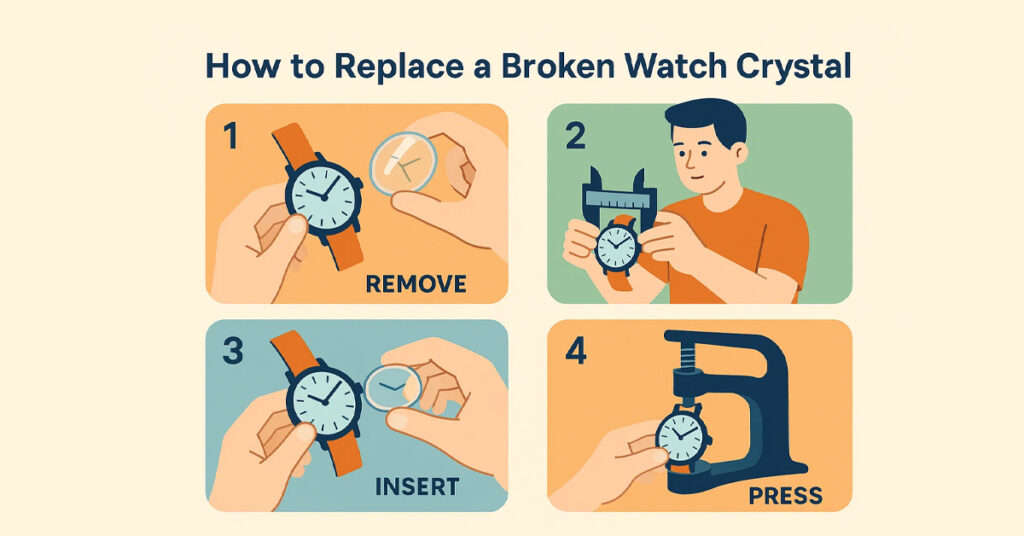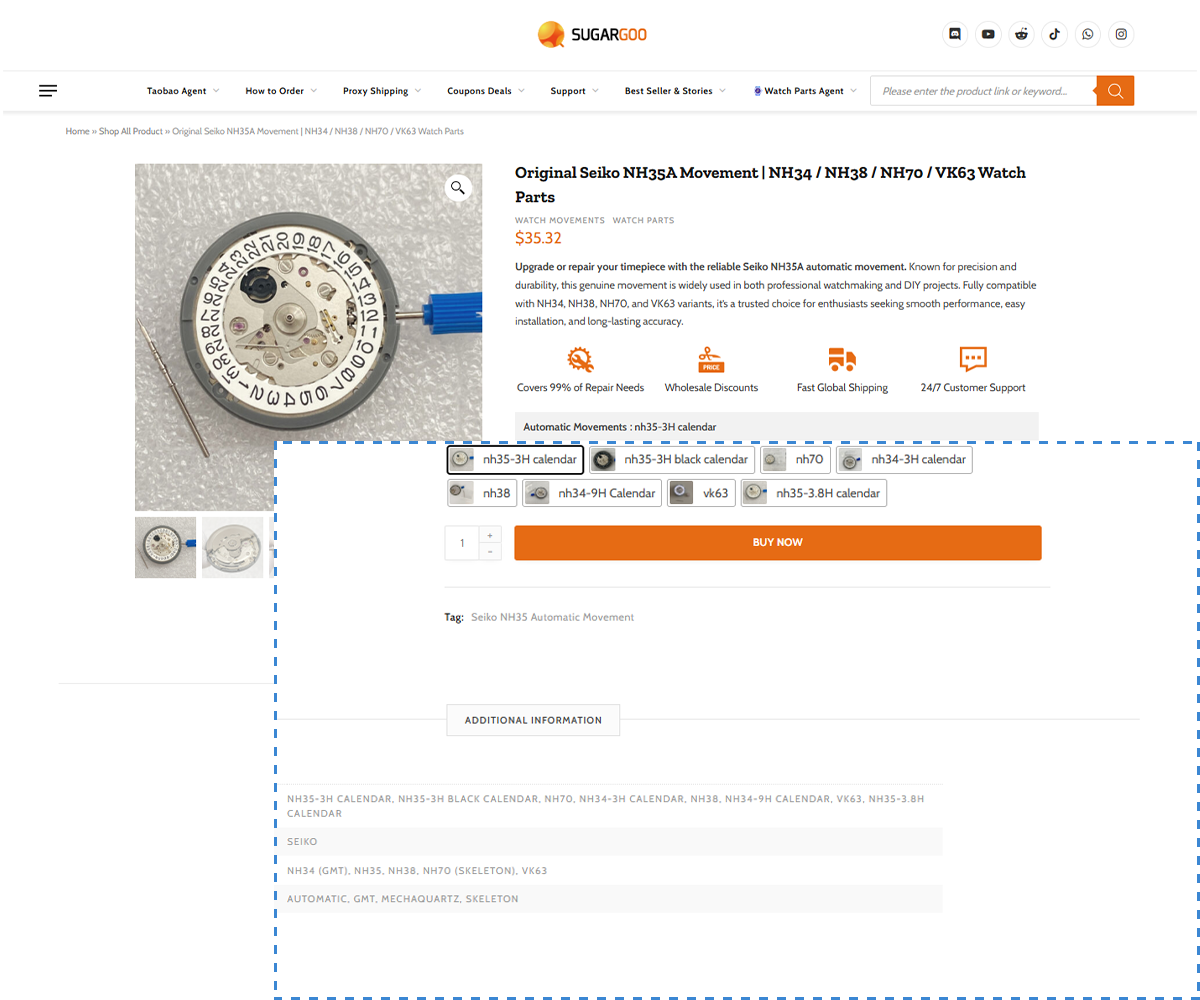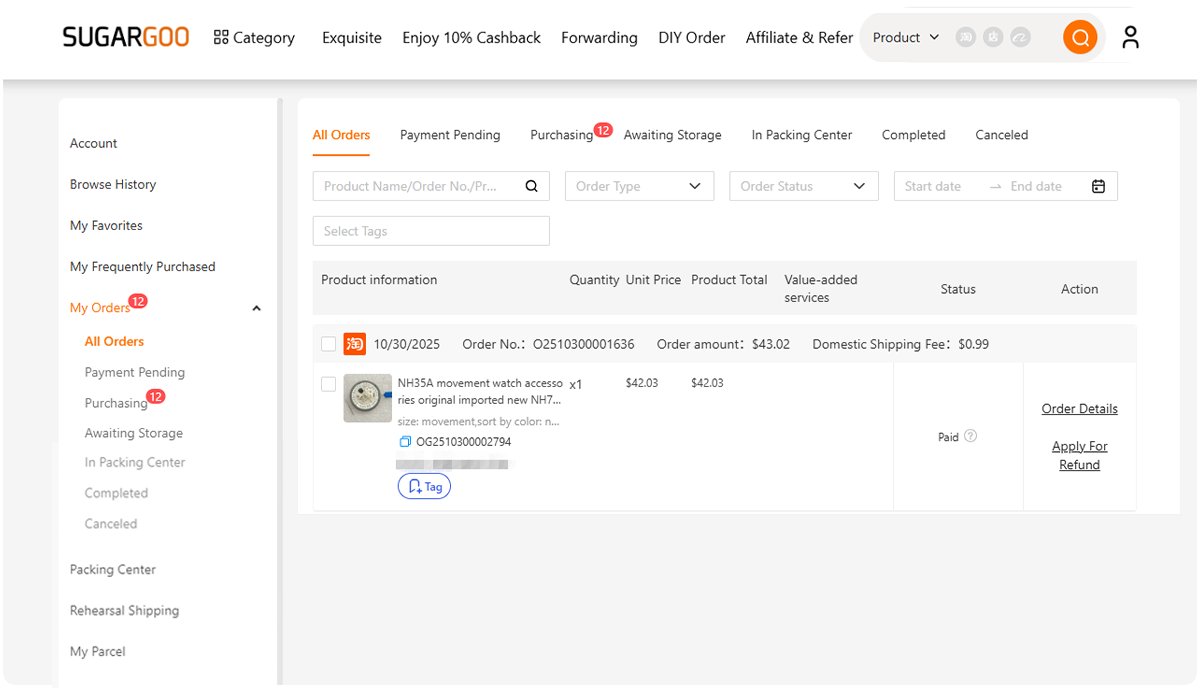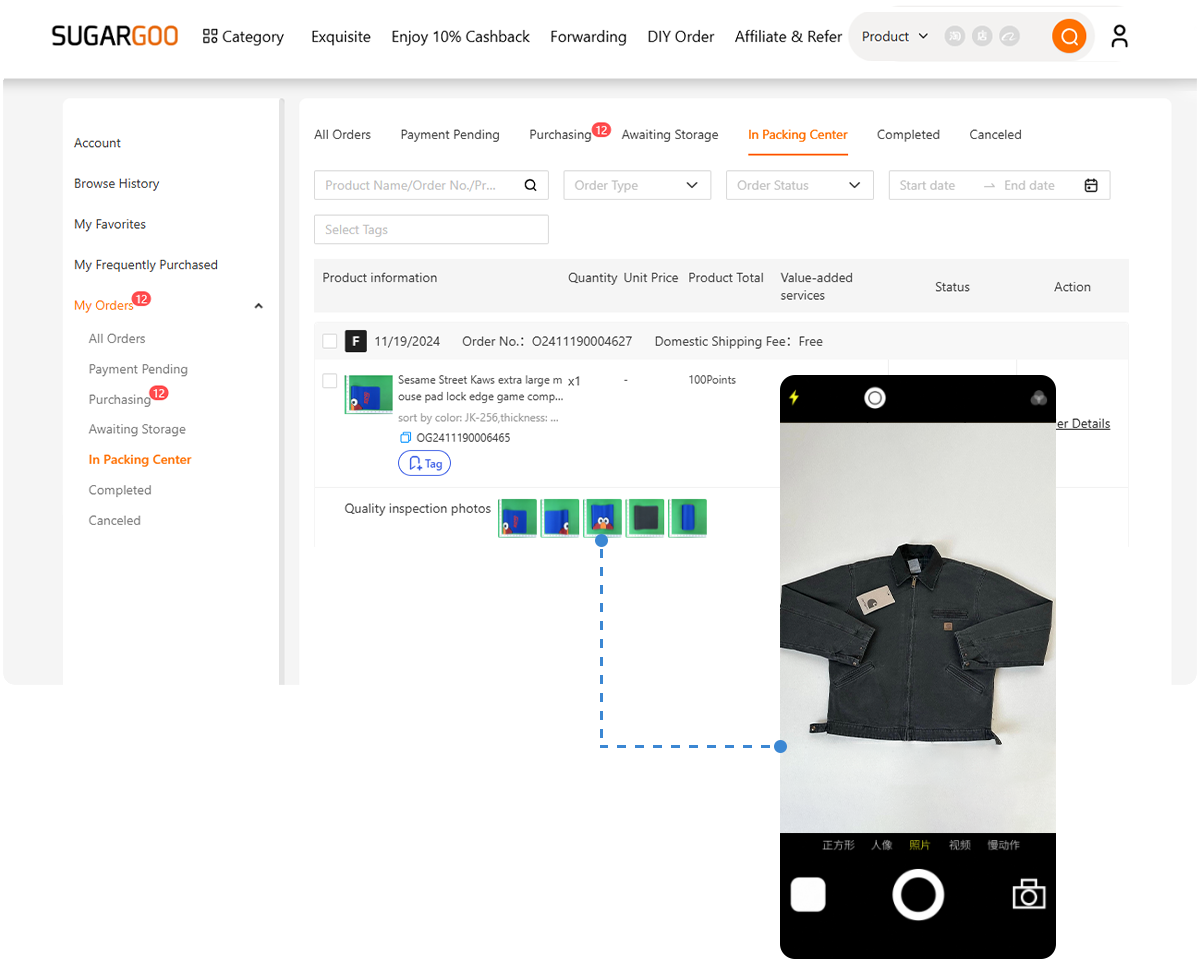How to Replace a Broken Watch Crystal
A cracked crystal changes everything. You might still see the time, but every glance reminds you that something’s broken. And if you love your watch, that tiny fracture feels personal. The good news? Replacing a crystal isn’t beyond reach — you just need the right mix of patience, touch, and understanding of how glass and metal meet.
Replacing a watch crystal is more like restoring balance than performing a repair. It’s the process of giving a timepiece its clarity back, of erasing that one moment when it hit a desk, a doorframe, or the floor. You’re not just changing glass; you’re fixing a connection.
When a Scratch Turns Into a Crack
Every watch owner has the same thought at first: “It’s just a scratch.” Then it deepens. The surface fogs. Tiny glass particles creep toward the dial. A cracked crystal doesn’t just ruin aesthetics — it exposes your dial and hands to dust and moisture that can quietly kill your movement.
Once a watch crystal breaks, time is literally running out. Even a small fracture can loosen the tension ring, distort light, or shift alignment between the dial and bezel. It can even push downward on the hands and cause them to jam. Replacing the crystal quickly is about protection, not vanity.
If you’re using a Seiko NH35 or NH36 mod, always remove the broken crystal before dust enters the movement. A quick wipe won’t help — it’s like sealing a leak without drying the surface first.
Choosing the Right Replacement Crystal
This part decides everything. Watch crystals aren’t “one size fits all.”
- Sapphire — scratch-proof, premium, but requires careful pressing.
- Mineral — cheaper, softer, easy to install.
- Acrylic (Hesalite) — vintage look, flexible, easy to polish.
The best replacement depends on your build. A Seiko diver deserves sapphire; a vintage dress watch might look wrong without acrylic. Don’t pick based on price — pick based on feel.
Look for crystals with exact measurements — diameter, height, and edge type (flat, double dome, tension ring). Slight mismatches can lead to leaks or distortion.
Sugargoo’s watch crystals section lets you filter by size, curvature, and brand compatibility. Pair that with a new gasket from watch accessories to make the job airtight.
The Real Process: Slow, Clean, and Confident
Replacing a crystal is about restraint. You’re dealing with tight tolerances — 1/10th of a millimeter can make the difference between snug and shattered.
- Open the case back using a proper watch case opener. Remove the movement and dial completely — never work with them inside.
- Inspect the gasket. Old seals can crack when you press a new crystal. Replace if it feels dry or flattened.
- Remove the crystal. For press-fit cases, use a crystal lift or press with the correct die. Push evenly from below; never pry.
- Clean the groove (the rehaut). Even a speck of dust can prevent a flush fit.
- Insert the new crystal using a hand press. Keep it level, press slowly, feel the tension set.
- Check reflections. Rotate the case under light — if the reflection line bends, the crystal isn’t seated evenly.
- Reassemble with patience. The gasket should compress just enough to create tension.
It’s the kind of repair where 90% of success is knowing when to stop. If something doesn’t feel right, it isn’t.
When to Replace vs. When to Upgrade
A crystal swap can also be a transformation. Maybe you cracked a flat mineral crystal — why not upgrade to a double-domed sapphire with anti-reflective coating? It changes how your dial looks completely, especially under sunlight.
Upgrading your crystal can bring new depth to your build. Domed sapphire makes indexes glow differently. A tension ring crystal tightens contrast and gives that “factory dive” look.
Sugargoo connects modders with verified suppliers offering AR-coated domed sapphire for NH35, SKX, and SNZF cases. Combine that with a custom watch part build — new bezel, new dial, new life.
What Usually Goes Wrong
Here’s what every builder faces sooner or later — not the glamorous side, but the lessons that make you better:
| Problem | Why It Happens | What to Do |
|---|---|---|
| Crystal sits unevenly | Wrong press die or uneven force | Repress gently; check gasket seating |
| Hairline crack after pressing | Too much pressure or misaligned case | Replace crystal; inspect case lip |
| Fogging inside crystal | Moisture trapped during assembly | Open, clean, reseal with new gasket |
| Bezel feels stiff | Tension ring not seated correctly | Remove and reinstall carefully |
| Distorted reflection | Crystal not level | Repress until reflection line straightens |
Modding forums are full of people who cracked a sapphire during install — not because they lacked tools, but because they rushed. The key is patience. Glass always wins against metal; respect it.
The Feel of a Fresh Crystal
When done right, the first thing you’ll notice isn’t visual — it’s emotional. That click when light passes through a clean sapphire dome feels like closure. It restores the confidence you had the day you first wore the watch.
Every custom builder remembers the first time they swapped a crystal. It’s the moment you go from being a collector to a creator. You learn how fragile beauty is — and how strong your attention to detail can be.
Once you finish, hold it under a bright light, tilt it, and watch how reflections roll. That’s the real modder’s satisfaction — not owning something rare, but bringing something back to life with your own hands.
Reliable Sources and Smarter Buying
Buying the wrong crystal twice costs more than buying the right one once. Cheap glass can have optical distortion, poor coating, or uneven polish. Some even arrive micro-chipped.
With Sugargoo, a verified Taobao agent, you can order direct from manufacturers who actually produce crystals for microbrands.
- Access sapphire, mineral, or acrylic in exact diameters.
- View QC photos before shipment. (See our QC guide.)
- Bundle with tools like crystal presses and holders in one package.
- Combine shipments to cut international costs using the order combine service.
Don’t just buy parts — build trust with your supply chain. That’s how professional modders keep their watches clean, tight, and reliable.
Register free on Sugargoo and start building your own restoration workflow — it’s what separates hobby from craft.
Final Thoughts
Replacing a crystal isn’t a repair — it’s a restoration of clarity. It’s learning how fragile precision can be, and how rewarding it feels to restore it with your own skill.
You’ll start seeing your watches differently after you’ve done it once. Every scratch you prevent, every gasket you reseat, every reflection you line up — that’s craftsmanship in its purest form.
And one day, when someone asks if it’s new, you’ll smile knowing it’s not — it’s just reborn.










